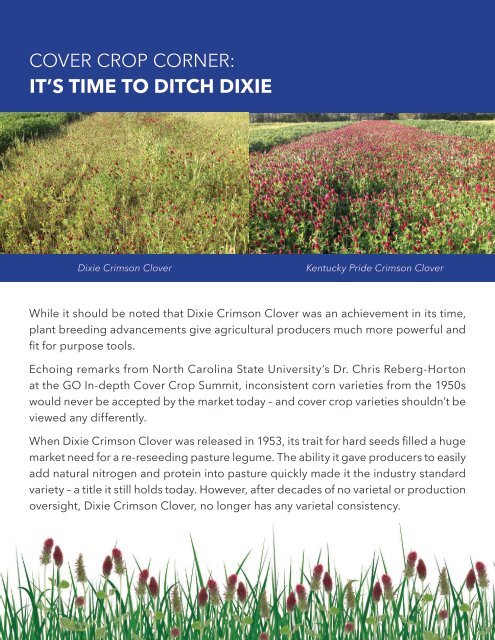Cover Crop Basics - Getting Started
An easy to understand Cover Crop Guide including information on understanding quality, seed cost, species information and best practices
An easy to understand Cover Crop Guide including information on understanding quality, seed cost, species information and best practices
You also want an ePaper? Increase the reach of your titles
YUMPU automatically turns print PDFs into web optimized ePapers that Google loves.
COVER CROP CORNER:<br />
IT’S TIME TO DITCH DIXIE<br />
Dixie Crimson Clover<br />
Kentucky Pride Crimson Clover<br />
While it should be noted that Dixie Crimson Clover was an achievement in its time,<br />
plant breeding advancements give agricultural producers much more powerful and<br />
fit for purpose tools.<br />
Echoing remarks from North Carolina State University’s Dr. Chris Reberg-Horton<br />
at the GO In-depth <strong>Cover</strong> <strong>Crop</strong> Summit, inconsistent corn varieties from the 1950s<br />
would never be accepted by the market today – and cover crop varieties shouldn’t be<br />
viewed any differently.<br />
When Dixie Crimson Clover was released in 1953, its trait for hard seeds filled a huge<br />
market need for a re-reseeding pasture legume. The ability it gave producers to easily<br />
add natural nitrogen and protein into pasture quickly made it the industry standard<br />
variety – a title it still holds today. However, after decades of no varietal or production<br />
oversight, Dixie Crimson Clover, no longer has any varietal consistency.



